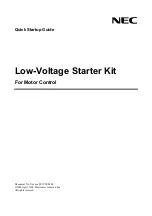
9
ENGLISH
Troubleshooting
Maintenance
• Keep vents clean and free of obstructions to ensure
proper cooling of the motor.
• Regularly inspect all mounting bolts and make sure they
are tightened properly. If any of the screws are loose,
tighten them immediately.
• Use a clean, soft cloth to clean the tool. Never use
alcohol or detergent. Disconnect the tool and remove the
battery before cleaning.
Tool servicing should only be performed at a
Authorized Service Center. Service
and maintenance by unqualified persons can be
dangerous and may result in personal injury and void the
product warranty.
Cleaning and care
Service
Tool loses efficiency.
Trigger cannot be
pulled.
Trigger can be pulled
but tool does not
rotate.
Battery leaks.
Battery does not
charge and charger
light does not turn
on.
The tool heats up
after prolonged
periods of work.
The battery heats up
during operation.
The battery heats up
during charging.
The charger heats up
during charging.
• Charge battery.
• Move the turn direction knob to the turn or
reverse position.
• Charge battery.
• Immediately clean liquid from skin or clothing
with soap and water.
• Replace the battery immediately.
• Insert the battery correctly into the charger.
• Check that the plug is securely connected to
the socket.
• Allow the tool to cool for 5 minutes.
• Stop the drill around 5 minutes to allow the
battery to cool off.
Problem
Solution
• Low battery.
• The direction of rotation knob is in the locked
position.
• Battery discharged.
• Tiny drips may occur in extreme temperatures
or after heavy use, this is normal.
• Heavy or very noticeable dripping is due to a
damaged battery.
• Battery incorrectly installed in the charger.
• Charger incorrectly connected to the socket.
• This heating is normal, as it absorbs the energy
generated by the motor gears and electricity
during operation.
• This heating is normal. The energy absorbed
from the battery makes this warning.
• This heating is normal, resulting from the
chemical reactions that occur inside the battery
while it is being charged.
• This heating is normal, the result of voltage
regulation.
Cause
Environmental protection
Electrical appliances and batteries must not be disposed of with household waste. Please deliver this appliance, as well
as its batteries with the contacts insulated with adhesive tapes, to a recycling center. Check the location of the nearest
center in your community.
Содержание 101606
Страница 10: ...Notes 10 ENGLISH...
Страница 15: ...Notas 10 ESPA OL...










































